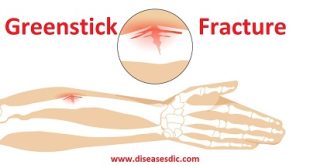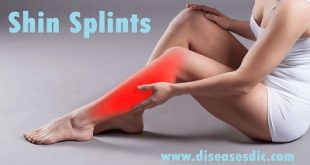Definition
Wrist pain is a common and discomforting ailment characterized by pain, tenderness, or aching sensations in the wrist area. It can stem from various factors, such as repetitive strain injuries from activities like typing, writing, or excessive use of electronic devices, as well as sports-related injuries, fractures, arthritis, or underlying medical conditions like carpal tunnel syndrome. The pain may range from mild to severe and could be accompanied by swelling, stiffness, or limited mobility, impacting daily activities and reducing overall quality of life. Early diagnosis and proper management, including rest, wrist exercises, application of ice or heat, and in severe cases, medical intervention or physical therapy, are crucial to alleviate wrist pain and prevent further complications.
Wrist Anatomy
The wrist is formed where the two bones of the forearm – the radius (the larger bone on the thumb side of the arm) and the ulna (the smaller bone on the pinky side) meet the carpal(wrist) bones. Rather than a single joint, the wrist is a complex joint of eight small bones, with ligaments, tendons and muscles. The unique formation of bones and ligaments is what gives your wrist a wide range of movements: up and down; side to side, and around in a circle. Damage to any of the components can cause wrist pain.
Types of Wrist Pain
It can manifest in different forms, and its underlying causes often determine the specific types. Some common types of include:
- Repetitive Strain Injuries (RSI): These occur due to repeated movements that put stress on the wrist joint and surrounding tissues, such as excessive typing, using a computer mouse, or engaging in activities like knitting or playing musical instruments.
- Carpal Tunnel Syndrome (CTS): One of the most prevalent wrist conditions, CTS results from compression of the median nerve as it passes through the narrow carpal tunnel in the wrist. This compression causes pain, tingling, and numbness in the hand and fingers.
- Wrist Sprains and Strains: Sprains refer to stretched or torn ligaments in the wrist, often due to sudden impact or a fall on an outstretched hand. Strains, on the other hand, involve overstretching or tearing of muscles or tendons.
- Wrist Fractures: Fractures can occur in any of the small bones (carpal bones) that make up the wrist joint. These injuries can result from accidents, sports injuries, or falls.
- Arthritis: Wrist arthritis, particularly osteoarthritis and rheumatoid arthritis, can lead to chronic wrist pain and joint inflammation, limiting mobility and causing discomfort.
- Ganglion Cysts: Non-cancerous fluid-filled cysts that develop near tendons or joints in the wrist, causing pain and sometimes restricting movement.
- De Quervain’s Tenosynovitis: A condition characterized by inflammation of the tendons on the thumb side of the wrist, leading to pain and difficulty in moving the thumb.
- Kienböck’s Disease: This is a rare condition where one of the small wrist bones, the lunate, loses its blood supply, resulting in wrist pain and limited wrist movement.
- Tendinitis: Inflammation of the wrist tendons, often caused by overuse or repetitive activities.
- Gout: A form of inflammatory arthritis where uric acid crystals deposit in the joints, including the wrist, leading to sudden and intense pain.
Prevalence
It has a considerable prevalence globally, with varying rates reported in different regions and populations. According to epidemiological studies, the prevalence of wrist pain ranges from 15% to 30% in the general adult population. Among specific occupational groups, the prevalence can be even higher, with some studies reporting rates as high as 50% in individuals engaged in repetitive manual tasks. Additionally, it is more common in women than in men, and its incidence tends to increase with age due to degenerative changes in the wrist joint. Among athletes and sports enthusiasts, the prevalence varies depending on the sport, ranging from 5% to 20% in activities such as gymnastics, tennis, and weightlifting. The high prevalence underscores the importance of targeted preventive measures and early intervention to alleviate the burden of this condition on individuals and healthcare systems.
Wrist pain by specific location or area
Pathophysiology of Wrist Pain
Wrist pain arises from a diverse array of pathophysiological mechanisms, encompassing conditions like repetitive strain injuries with inflammation of tendons and ligaments, carpal tunnel syndrome stemming from median nerve compression, osteoarthritis causing cartilage deterioration and joint inflammation, traumatic injuries resulting in fractures or dislocations, and inflammatory disorders like rheumatoid arthritis attacking joint tissues. Ganglion cysts and nerve compressions, such as ulnar tunnel syndrome, can also contribute to discomfort. This complex interplay of anatomical structures and underlying conditions necessitates accurate diagnosis for effective management and treatment to mitigate pain and restore optimal wrist function.
Symptoms
Whether you realize it or not, your wrists are always getting a workout. From typing on the computer to carrying groceries or playing sports, you depend on your wrists to be in good shape at all times. Sometimes heavy use can catch up, however, resulting in pain. Though it’s a common complaint in all people, wrist pain especially affects older individuals and those that strain their wrists during work or play.
Common characteristics of wrist pain
If you’re experiencing wrist pain, it may be described as:
- Pain with movement
- Stiffness
- Swelling
- Numbness or tingling
- Grating sensation
- Weakness
Causes of Wrist pain
Damage to any of the parts of your wrist can cause pain and affect your ability to use your wrist and hand. The damage may result from:
Injuries
- Sudden impacts. Wrist injuries often occur when you fall forward onto your outstretched hand. This can cause sprains, strains and even fractures. A scaphoid fracture involves a bone on the thumb side of the wrist. This type of fracture may not show up on X-rays immediately after the injury.
- Repetitive stress. Any activity that involves wrist motion that you do again and again can inflame the tissues around joints or cause stress fractures. Some examples include hitting a tennis ball, bowing a cello or driving cross-country. The risk of injury is increased when you perform the movement for hours on end without a break. De Quervain tenosynovitis is a repetitive stress injury that causes pain at the base of the thumb.
Arthritis
- Osteoarthritis. This type of arthritis occurs when the cartilage that cushions the ends of the bones deteriorates over time. Osteoarthritis in the wrist is uncommon and usually occurs only in people who have injured that wrist in the past.
- Rheumatoid arthritis. A disorder in which the body’s immune system attacks its own tissues, rheumatoid arthritis commonly involves the wrist. If one wrist is affected, the other one usually is too.
Other diseases and conditions
- Carpal tunnel syndrome. Carpal tunnel syndrome develops when there’s increased pressure on the median nerve as it passes through the carpal tunnel, a passageway in the palm side of the wrist.
- Ganglion cysts. These soft tissue cysts occur most often on the part of the wrist opposite the palm. Ganglion cysts may be painful, and pain may either worsen or improve with activity.
- Kienbock disease. This disorder typically affects young adults and involves the progressive collapse of one of the small bones in the wrist. Kienbock disease occurs when there is not enough blood supply to this bone.
What are the risk factors of wrist pain?
Wrist pain can happen to anyone whether you’re very sedentary, very active or somewhere in between. But the risk may be increased by:
- Sports participation. Wrist injuries are common in many sports, both those that involve impact and those that involve repetitive stress on the wrist. These can include football, bowling, golf, gymnastics, snowboarding and tennis.
- Repetitive work. Almost any activity that involves your hands and wrists, even knitting and cutting hair, if performed forcefully enough and often enough can lead to disabling wrist pain.
- Certain diseases or conditions. Pregnancy, diabetes, obesity, rheumatoid arthritis and gout may increase the risk of developing carpal tunnel syndrome.
Complications
Wrist pain can lead to several complications if left untreated or if the underlying cause is not properly addressed. Some of the potential complications of wrist pain include:
- Loss of Function: Persistent wrist pain can restrict the range of motion in the wrist joint, leading to difficulties in performing everyday tasks and activities that involve the use of the hand and wrist.
- Disability: Severe or chronic wrist pain can cause significant disability, impacting an individual’s ability to work, engage in recreational activities, and perform self-care tasks.
- Reduced Grip Strength: Wrist pain can weaken the muscles of the hand and wrist, leading to a reduction in grip strength and difficulties in holding objects securely.
- Nerve Damage: Conditions like carpal tunnel syndrome, if left untreated, can result in nerve damage, leading to persistent numbness, tingling, and weakness in the hand and fingers.
- Joint Deformity: In cases of chronic inflammation or progressive conditions like rheumatoid arthritis, wrist joint deformities may develop over time, affecting hand function and appearance.
- Psychological Impact: Prolonged wrist pain can cause emotional distress, anxiety, and depression, especially when it hinders daily activities and affects the quality of life.
- Loss of Independence: Severe wrist pain can limit an individual’s ability to perform basic self-care tasks independently, affecting their overall independence and requiring additional support.
- Chronic Pain Syndrome: Long-lasting wrist pain can lead to a chronic pain syndrome, where the body’s pain response becomes amplified, leading to heightened sensitivity to pain signals.
- Reduced Work Productivity: Wrist pain in occupational settings can lead to decreased work productivity and increased absenteeism, affecting both the individual and their employer.
- Secondary Musculoskeletal Issues: Compensatory movements due to wrist pain can put additional strain on other parts of the upper extremity, leading to secondary musculoskeletal issues in the elbow, shoulder, or neck.
How to diagnosis wrist pain?
Physical exam
Your doctor will conduct a physical exam and prescribe some tests to assess your wrist pain. Your doctor can do:
- Bend the wrist forward for 60 seconds to see if numbness or tingling occurs
- Touch the area above the median nerve to see if pain occurs
- Ask him to hold objects to test his grip
After a physical examination and review of symptoms, a doctor can also diagnose wrist pain and the underlying condition by:
- Explorations of medical imaging, including X-ray, CT scan, and an MRI.
- Arthroscopy: This procedure involves a small cut in the wrist. A small instrument that has a small camera attached is inserted through the cut. The images from the camera are then projected onto a computer monitor for the doctor to view.
- Nerve conduction studies: This measures how fast nerve impulses travel through the carpal tunnel region of the wrist.
Invasive diagnostic techniques are usually only used after rest, and recovery from injury has been unsuccessful.
Treatment
Often, wrist pain improves with remedies like rest, ice and changes in activities. But if these kinds of self-care aren’t working, we may recommend:
- Bracing or splints: Wrist splints or wrist braces help immobilize and support your wrist while it heals. Your doctor might recommend you use a splint for a week or two and then return for further examination.
Using a splint to immobilize the wrist
- Physical therapy: Physical and occupational therapy may be used as standalone treatments or as treatments after wrist surgery. With therapy, you can learn more comfortable ways to use your wrists or get help with your recovery.
- Guided injections: Orthopedists use injections to administer inflammation-reducing medication directly into the joint. Some injections use ultrasound imaging (using sound waves) or fluoroscopy (injecting a dye agent to more clearly show the joint) for precise delivery.
- Minimally invasive surgery: Minimally invasive arthroscopic surgery lets a surgeon repair the wrist through small incisions using tiny surgical tools. When surgery is needed, our doctors use arthroscopic techniques whenever possible to repair carpal tunnel syndrome, remove ganglion cysts and repair ligament tears.
- Fusions and reconstructions: If you have advanced wrist pain from arthritis or trauma, specialty-trained hand and wrist surgeons offer surgical fusion and reconstruction. These surgeries use metal plates and bone grafts from other parts of your body to stabilize the tiny bones of the wrist and relieve pain.
Prevention of wrist pain
While it isn’t always possible to prevent injuries such as falls, you can protect your wrists and prevent wrist pain by:
- Wearing appropriate protective devices during work and sports activities
- If you play a sport, work a job, or enjoy an activity that requires repetitive motion with your wrists, being mindful of any pain that arises and taking steps to mitigate it as soon as possible
- Making sure you have the proper training for sports and activities
- Avoiding overtraining or pushing through an injury
- Using proper form when engaging in activities
Physical and occupational therapy are often helpful in preventing future wrist problems.
 Diseases Treatments Dictionary This is complete solution to read all diseases treatments Which covers Prevention, Causes, Symptoms, Medical Terms, Drugs, Prescription, Natural Remedies with cures and Treatments. Most of the common diseases were listed in names, split with categories.
Diseases Treatments Dictionary This is complete solution to read all diseases treatments Which covers Prevention, Causes, Symptoms, Medical Terms, Drugs, Prescription, Natural Remedies with cures and Treatments. Most of the common diseases were listed in names, split with categories.







